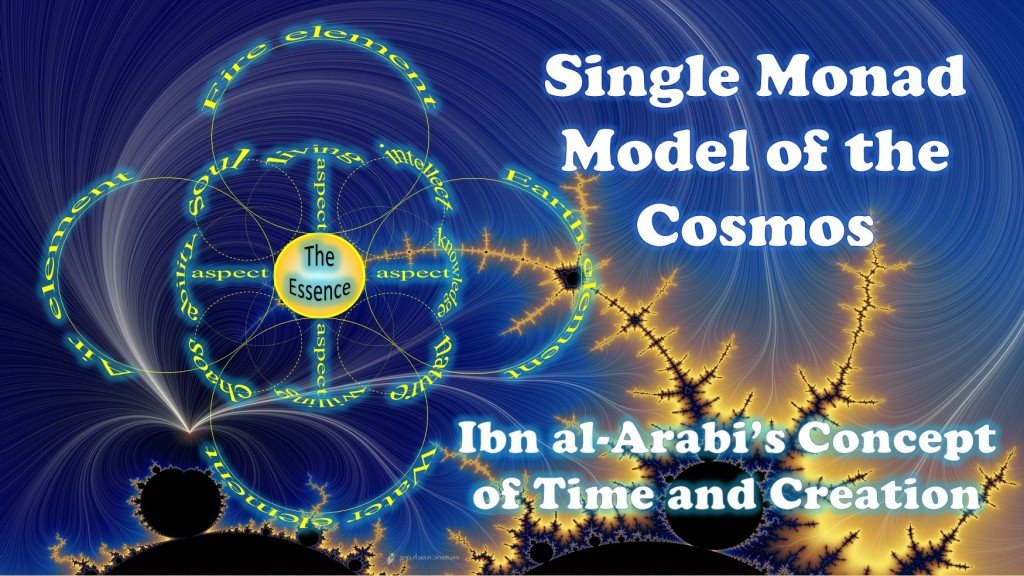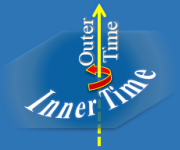A researcher offers a comprehensive presentation of an ancient Islamic theory
of time that has implications for modern cosmology and physics.
According to Haj Yousef (The Single Monad Model of the Cosmos, 2007),
the medieval Islamic philosopher Ibn al-Arabi devised a cosmology that not only
anticipates the emergence of modern quantum mechanics, but also provides
solutions to its most vexing problems. At the heart of Ibn al-Arabi’s view of
the universe is a dualistic conception of time. On the one hand, time is
ontologically real if understood from the perspective of each moment. But the
experience of time is always as a continuous volume—a perceptual distortion of
the real world, an imaginary manifestation. The paradox of our observation of
time is that we’re only ever encountering time as the past, the continual
re-creation of each discrete moment ad infinitum. As a result, the world
bifurcates into two states: a vacuum, the empty space that constitutes time in
its reality, and the void, the phenomenal expression of time as we experience
it. This division opens up the possibility of simultaneously existing
dimensions, thereby creating the conditions for a monistic harmony of the
psychical and the physical. Haj Yousef intends this volume as a sequel to his
first book on Ibn Al-Arabi, expanded to be “more accessible to the wider
scientific community.” This reworking includes an account of the history of
cosmology, from ancient Sumerian and Babylonian versions to the present, and a
thorough introduction to Islamic mysticism. The author’s command of the
pertinent historical and theoretical material is breathtaking, with some of his
conclusions peculiar but tantalizing. For example, he argues that ancient
alchemy can actually be understood as a precursor to quantum mechanics, and that
Ibn al-Arabi anticipates contemporary discussions of black holes. But Haj Yousef
can sometimes enthusiastically overemphasize the explanatory power of Ibn
al-Arabi’s cosmology. It surely seems like an overstatement to claim that “most,
if not all, of the major fundamental problems of physics and cosmology are
easily solved in this model.” Still, this remains a captivating study for those
with a strong grasp of modern physics.
A historically illuminating account of an ancient but still relevant
conception of the universe.

Other Pages Related to Search Keywords:
... .” Still, this remains a captivating study for those with a strong grasp of modern physics. A historically illuminating account of an ancient but still relevant conception of the universe. ...
... ins a captivating study for those with a strong grasp of modern physics. A historically illuminating account of an ancient but still relevant conception of the universe. ...
... rse. ...
... still relevant conception of the universe. ...
... .” Still, this remains a captivating study for those with a strong grasp of modern physics. A historically illuminating account of an ancient but still relevant conception of the universe. ...
... ousef can sometimes enthusiastically overemphasize the explanatory power of Ibn al-Arabi’s cosmology. It surely seems like an overstatement to claim that “most, if not all, of the major FUNDAMENTAL PROBLEM s of physics and cosmology are easily solved in this model.” Still, this remain ...
... the real world, an imaginary manifestation. The paradox of our observation of time is that we’re only ever encountering time as the past, the continual re-creation of each discrete moment AD INFINITUM . As a result, the world bifurcates into two states: a vacuum, the empty space that cons ...
... e as a sequel to his first book on Ibn Al-Arabi, expanded to be “more accessible to the wider scientific community.” This reworking includes an account of the history of cosmology, from ancient Sumerian and Babylonian versions to the present, and a thorough introduction to Islamic myst ...
... resentation of an ancient Islamic theory of time that has implications for modern cosmology and physics. According to Haj Yousef ( The Single Monad Model of the Cosmos , 2007), the medieval Islamic philosopher Ibn al-Arabi devised a cosmology that not only anticipates the emergence of mode ...
... l distortion of the real world, an imaginary manifestation. The paradox of our observation of time is that we’re only ever encountering time as the past, the continual re-creation of each DISCRETE MOMENT ad infinitum. As a result, the world bifurcates into two states: a vacuum, the empty ...
... e wider scientific community.” This reworking includes an account of the history of cosmology, from ancient Sumerian and Babylonian versions to the present, and a thorough introduction to Islamic mysticism. The author’s command of the pertinent historical and theoretical material is br ...
... hensive presentation of an ancient Islamic theory of time that has implications for modern cosmology and physics. According to Haj Yousef ( The Single Monad Model of the Cosmos , 2007), the medieval Islamic philosopher Ibn al-Arabi devised a cosmology that not only anticipates the emergenc ...









